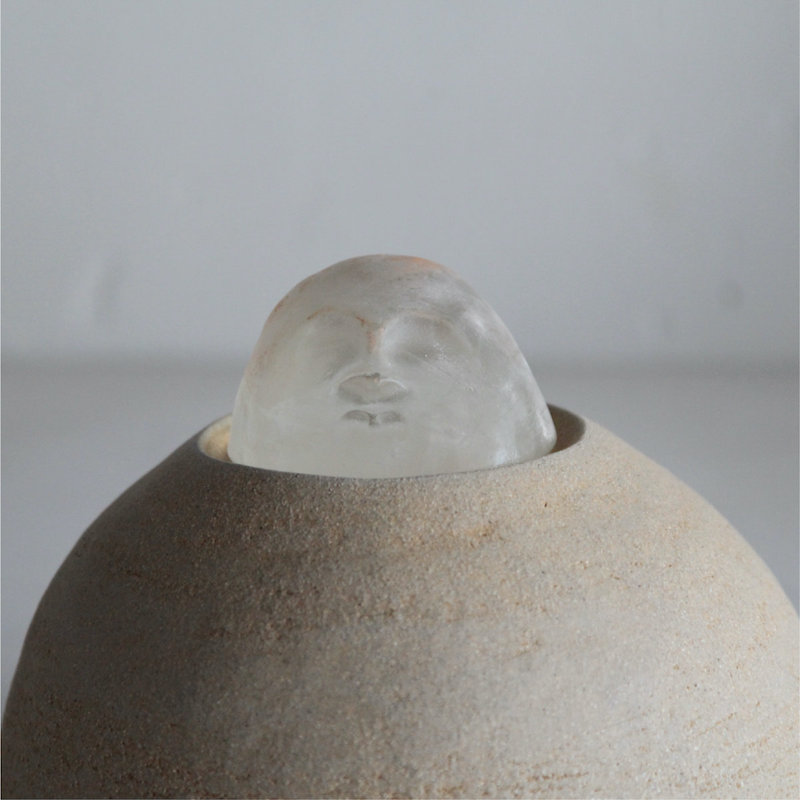It's that special day where instead of putting your money where your mouth is... you put them where your ears are! That's right, it's Bandcamp Friday once again—for today only, Bandcamp waives its fees and puts all proceeds towards independent artists and labels. So if you've been meaning to grab the latest record from one of your favorite artists or your friend's new mixtape, today is absolutely the day to do it.
Need some suggestions? There's tons of music out there, but as always we're here to share with you some of the music that's been grabbing our attention recently.
Patrick Shiroishi: I was too young to hear silence
If you're a regular reader of our blog, you might have noticed our particular enthusiasm for the work of Patrick Shiroishi, the prolific LA-based composer and improviser. Since our last coverage of Shiroishi's work, which was about a year ago, the artist has released nearly ten albums. These include collaborations with artists such as Dylan Fujioka and Marta Tiesenga, as well as his work with collectives Fuubutsushi and Spherule Trio. Moreover, Shiroishi has showcased his exceptional saxophone skills on several tracks of the recently released Swatta LP by the Queens-based grindcore band Chepang, and has also been revealed as a member of the influential experimental metalcore collective, The Armed.

I was too young to hear silence is Shiroishi's latest full-length solo venture. In contrast to his previous releases, Hidemi and Evergreen, which delved into his family history, this album focuses on the Japanese concept of Ma—interpreting negative space not merely as an absence, but as a substance. Recorded live in a single take in the echoing environment of a parking lot beneath a Monterey Park hot pot restaurant, the album captures Shiroishi's profound minimalist interaction with his surroundings. Using only his trusted alto saxophone, a glockenspiel, a recording device, and two microphones, Shiroishi's ability for collaboration is evident. However, in this instance, the collaboration is with the space itself rather than with other musicians. His approach is remarkably calm and deliberate, allowing the sounds to meaningfully interact with the environment. The silences between individual notes and phrases are not empty but are instead deep, resonant, and brimming with potential.
The album, documenting a single continuous performance, is divided into nine distinct chapters. The opening track, "Stand Still Like A Hummingbird," and the subsequent "I Almost Said," succinctly encapsulate the album's essence: the sounds and the silences are equally impactful, reflecting each other. At times, Shiroishi releases short, singular notes from his saxophone, allowing them to fully resonate within the space. In other instances, he engages in extended drones and intense solos, layering sounds upon the space's natural reverberations. The album's climax is reached in "Hunting The Eye Of His Own Storm," where Shiroishi masterfully balances restraint and ferocity, momentarily tearing the silence apart. The concluding track, "If Only Heaven Would Give Me Another Ten Years," beautifully intertwines dynamic melodies, bringing the record to a poignant close.
What is particularly striking about I was too young to hear silence is Shiroishi's transformation of a mundane parking lot into a space for profound philosophical reflection and meditation on sound, akin to a post-modern cathedral. The album stands as a bold testament to the power of sonic austerity and the art of understatement, challenging the listener to engage deeply while offering a richly rewarding experience through its lush and intricate soundscapes.
Scope out I was too young to hear silence on Bandcamp!
Matük: Palmas

I've always been a fan of artists who blend their heritage into well-crafted electronic music, so I was stoked to catch wind of new music from Matük just in time for Bandcamp Friday. Freshly released on the Acacia Baila label, Palmas sees Matük continuing their journey to inject a melange of influences into their music. These tracks are decidedly in the electronic space, of course, yet unashamedly draw from the rhythms of Afro-Latin music and occasionally feature instrumentation calling back to his Colombian roots. But don't worry, there's no shortage of punchy kicks, skronky sound design, and the constant desire to get up and move to the music.
In the opening track "Mudo" you'll find a driving mass of rhythm and groove, melding rhythmic layers with acid bass and atmospheric textures. The energy doesn't let up in "Cybermelocha"—a standout moment for me was the electro-Latin break about halfway through the track, combining synths and chopped vocals with steamrolling percussion. Then, fading away to pads and texture, tension builds before coming back with a drop that hits even harder. In other tracks like "Perrin" and "Dreams a Sueños" it's hard not to appreciate the clear, meticulous care that went into crafting the interwoven layers of rhythm and texture.
The final two tracks on Palmas are remixes of "Dreams a Sueños" and "Perrin" from NAP and Brouhaha, aliases of close friends and compatriots within the Acacia Baila sphere. Well-done remixes maintain the core spirit and character of the original, but feature some choice considerations to inject the stylings of the artist at the helm of rearranging the track. NAP's contributions lean even heavier into ambient atmospheres with distant reverberant arpeggios and swelling pads drenched in delays. Meanwhile, Brouhaha's take on "Perrin" builds upon the glitched-out synth textures at the opening of Matük's original, with slowed-down and stretched-out beats slowly emerging from the tastefully murky cloud.
Chaser: Planned Obsolescence
It's not quite released yet, but I had to draw attention to an exciting upcoming release: Planned Obsolescence by Chaser. Chaser is an experimental quartet from New York, with a sound that's equal parts brutal prog, no wave, post punk, and...just downright strange.

Featuring Dominika Em's fluid, energetic vocals, Shayna Dulberger on bass, Chris Welcome on guitar, and Oran Canfield on drums, Chaser might at first look like a typical rock band, but they're much more than that: instead of steady rhythms or hummable tunes, you'll hear highly precise rhythmic structures that change on a dime—vocals that teeter between fluid monologues, gestural shouts, and powerful anthem-like delivery—dissonant, angular guitar textures that pierce the air—and bass lines that underpin and glue together their erratic, discordant, and constantly-shifting sonic structures.
You might compare Chaser to noise rock, math rock or post punk, but they have just as much in common with Henry Cow as they do Fugazi. Their music feels cold, calculated, sinister, and relentless. It's not an easy listen, but once you've latched onto their particular flavor of chaos, it's deeply engaging. It's morbid, aggressive, and somehow feels deeply futuristic: it's the sound of deep-rooted unease at the coming of an all-too-real dystopian future.
At the moment, Planned Obsolescence is available for preorder—but you can stream the first two tracks for a sense of where the album will lead. "Bold Disobedience" bounces back and forth between jarring guitar incisions and atonal anthems, while "Holy Man" delivers a disconcerting story surrounded by tightly rhythmic sonic chaos, all devolving into a soup of melting processed vocal textures. If you want to hear something fresh, new, and strange—this album is well worth your time.
Check out Planned Obsolescence on Bandcamp!
TALsounds: Shift

The latest offering from Natalie Chami, aka TALsounds, is a glistening ocean of synth driven textures, woozy melodies, and captivating vocals. Previous material relied heavily on vintage synths and hazy vocals, but with new release Shift, digital and FM synths are responsible for the soundworld, creating the perfect support to allow Chami's voice to shine. Analog or digital, it doesn't matter: the sound stays true to her previous aesthetics exemplifying the adage "it's the wizard not the wand."
Opening songs to any album are a great way to feel the foundation, and with "Palms," that is exactly what you get. Gentle layers of synths with upfront and melodic vocals fully envelop you in the world which only gets richer as we move to "Eye Lines." A classic TALsounds synth motif propels us through the entire track with pockets of sonic fog pulsing with life, all wrapped together with a delicately pitch shifted vocal harmony.
"Fading Phase" is a stand-out as a truly lush garden of sound with vocals that shift away from being a pure lead and function as a chorus that supports the synths. "Water Bodies" is another unique track that eschews vocals but is no less powerful and enjoyable, indeed it makes the remaining tracks feel as though they are part of a dedicated act. Each track has a gorgeous construction and sounds exquisite: truly an album worth listening to on repeat.
Soula: Draw me a soundscape in ASCII

As a lover of experimental and textural electronic sound, I'm always on the lookout for new releases from Superpang—an Italian label run by Christian Di Vito. Superpang hasn't been around for long; it was formed just three years ago in 2020, but since, it has produced a near-constant stream of engaging and peculiar music. Superpang's releases inclue free improvisation, experiments with novel synthesis methods, extended drone, aggressive deconstructions of dance music tropes, and much more. We've covered several Superpang releases in the past (including Scott Cazan's THREE, Lauren Sarah Hayes's Embrace, cd_slopper's pfanscotcoe, and others.
Today, we turn our attention to one of Superpang's most recent releases, Draw me a soundscape in ASCII by Soula—featuring a single, 19-minute track titled "\ | / '-.;;;.-' -==;;;;;==- ~~~~ .-';;;'-. / | \."
Described by the artist as a "free-form composition," this album is comprised of field recordings originally used for a sound installation presented first in February 2023 at FourOneOne in New York. Recycling sounds from this field recording and processing them using a variety of software and reel-to-reel tape machines, the composition is intended to highlight and examine the similarities and contrast between "wilderness" and tourist areas. You'll hear patient, extended periods of field recordings. You'll question which parts of the sound are "real," and which are processed/overdubbed. You'll hear stammering speed-shifted sounds bringing attention to details that might be difficult to discern in real life—and you'll be surrounded by an ever-changing texture that, while clearly non-real, always maintains the organic structure of familiar environments. It's uncanny, and simultaneously deeply satisfying to experience. Grab your headphones and be ready to be immersed.








